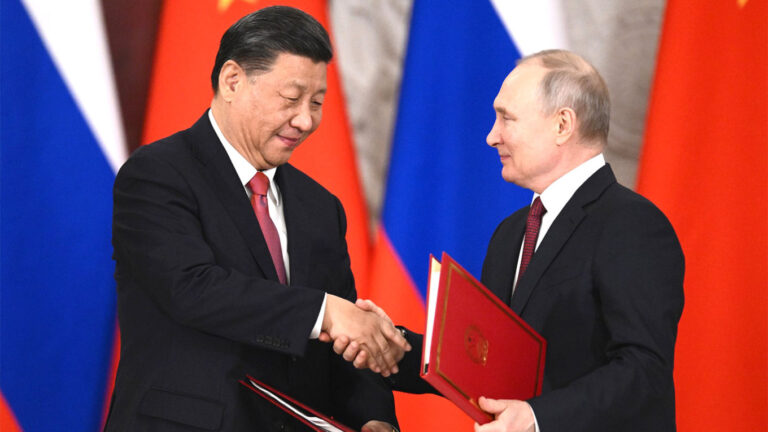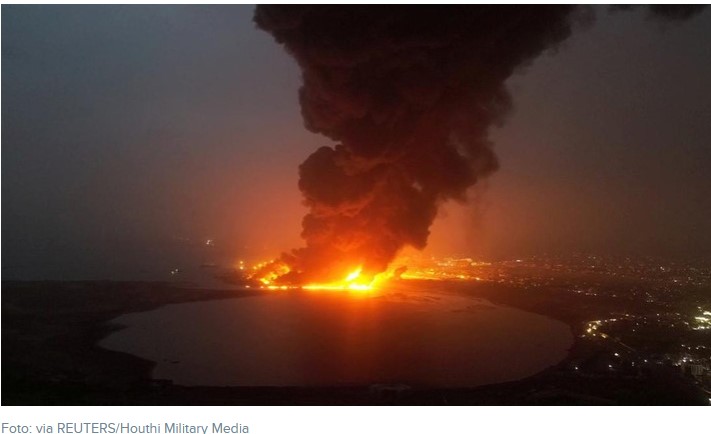
STRATEGIC ASSESSMENT. Israel’s ground invasion of Gaza is now underway, with reports yesterday that Israel Defense Forces (IDF) tanks and soldiers were pressing ahead toward Gaza City, meeting fierce resistance along the way. Hamas militants launched ambushes, conducted mortar attacks, and engaged in hit-and-run style tactics against Israeli troops, limiting their advance. In terms of regional escalation, the ground invasion holds additional significance, as its launch meets most of the conditions set by various Iranian proxies that have continuously threatened to become more engaged if the IDF invaded. If Iran’s proxies — Lebanese Hezbollah, Houthi rebels in Yemen, and Iraqi Shia militias — do join the fray more robustly, the conflict between Israel and Hamas could potentially morph into a full-scale, multi-front war that drags in the entire region, potentially placing Tehran on a collision course with Israel and the United States.

There has already been some activity in this regard in recent weeks. The Houthis have targeted Israel with missiles and drones out of Yemen multiple times since the war with Hamas began early last month, while Lebanese Hezbollah has been harassing Israeli border assets from Lebanon. Iran’s foreign minister on Wednesday warned that Israel and the United States would face “harsh consequences” if a ceasefire were not established in Gaza. Fighting along multiple fronts with Gaza, Lebanon, Yemen, Syria, and Iraq would force Israel to divert resources, potentially creating gaps in its sophisticated air defenses, leaving its forces vulnerable. It would also force the United States into the war.
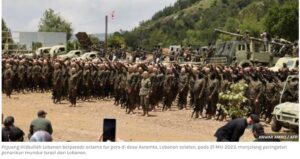
Today, Hassan Nasrallah, the leader of Lebanese Hezbollah, is expected to give his first speech since Hamas’ October 7 terrorist attack against Israel. A day before today’s planned speech by Nasrallah, the group claimed to have simultaneously attacked nineteen positions in Israel, representing the largest escalation of fighting along the Israeli-Lebanese border yet. Whether the speech will announce a larger escalation with Israel by Hezbollah or temper its direct involvement in the conflict — albeit cloaked in hostile and aggressive rhetoric — is a key question and will have vast implications for the Israel-Hamas conflict and broader regional stability. Rather than attempt a full cross-border infiltration of Israel, Hezbollah militants have thus far participated in cross-border attacks using anti-tank guided missiles and targeting security cameras with small arms. Hezbollah has lost approximately 51 fighters due to Israeli drone strikes, and the clashes have displaced at least 19 thousand people in Lebanon in the past three weeks, according to the International Organization for Migration (IOM). Hezbollah has used surface-to-air missiles to down an Israeli drone, hinting at improved capabilities. The missiles are part of Hezbollah’s increasingly potent weapons arsenal, including reportedly between 100 thousand to 150 thousand rockets and precision-guided missiles, mainly supplied by Iran. Although the full range of Hezbollah’s operational capabilities is unknown, what is clear is that Hezbollah is better-equipped, better-trained, and more battle-hardened than it was in 2006 when the group had its last major confrontation with Israel. Even if it does seek to open a northern front, there is little doubt that Hezbollah could wreak havoc by targeting positions inside Israeli territory.
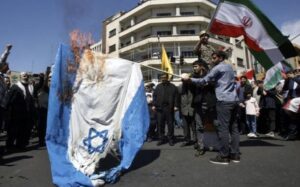
Despite its arsenal and portrayal as the vanguard of Iran’s “axis of resistance” — Iranian proxies that span Iraq, Syria, Lebanon, Bahrain, Saudi Arabia, Gaza, and the West Bank — Hezbollah’s response to Israel’s bombardment and expanding ground invasion of Gaza has been relatively restrained thus far. The group’s seeming hesitancy to initiate a full-scale war with Israel may be due to the lack of appetite for war in Lebanon among its domestic population, as the country is still reeling from a years-long economic crisis. Reportedly, Hezbollah’s “red line” for intervention in the conflict would be the defeat of Hamas in Gaza, which is Israel’s stated goal for its ground operations and air strikes. Yet, crossing such a red line may not necessitate crossing the border. Hezbollah could coordinate attacks on Israeli targets that Hamas cannot reach, significantly straining the Iron Dome defense system, without necessarily having to escalate cross-border incursions. Moreover, some analysts believe that Hezbollah may hope to capitalize on any current or potential global backlash against Israel and the United States for the mounting death toll and humanitarian crisis in Gaza, galvanizing support for any potential further escalation in the conflict.
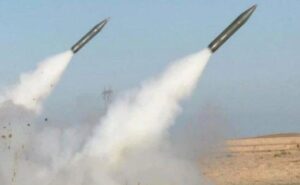
Several Iranian-backed groups in Iraq have also threatened to become more fully involved in the conflict. Kata’ib Sayyid al-Shuhada (KSS), Harakat Hezbollah al-Nujaba (HHN), and Kata’ib Hezbollah (KH) each pose a threat for a possible escalation of attacks against U.S. forces still stationed in Iraq. KSS, KH, and HHN could all enter the conflict, with battle-hardened troops loyal to Iran that have experience fighting U.S. forces. In a statement released earlier this week, Akram Al-Kaabi, the Secretary General of HHN, said: “The Islamic Resistance in Iraq took a decision to liberate Iraq from all foreign military presence, and there will be no standing down.” KH security chief Abu Ali al-Askari also released a statement, claiming that the “axis of resistance has the capacity to fight against its enemies and confront them by relying on the internal resources of the resistance.” According to the U.S. Department of Defense, there have been more than two dozen attacks targeting U.S. forces in Iraq and Syria since the conflict between Israel and Hamas kicked off in early October. Al-Asad Air Base in western Iraq has been targeted multiple times, including by one-way attack drones that have resulted in serious injuries to U.S. troops stationed there.

The Yemeni Houthi movement, which receives training and weapons from Iran and its Islamic Revolutionary Guard Corps- Quds Force (IRGC-QF), has fired several salvos of missile and drone strikes in the direction of Israel in recent weeks, albeit to little effect. The first salvo, fired on October 19, was intercepted by U.S. naval forces, and the next batch missed its targets in Israel and landed in Egypt. The most recent barrage on Tuesday prompted Israel to deploy missile boats into the Red Sea the following day, running the risk of further escalation, as the prime minister of the Houthi government had threatened to attack Israeli ships in the Red Sea last week. At the outset of the conflict, the movement’s leader, Abdul-Malik al-Houthi, threatened retaliatory drone and missile strikes if the United States became directly involved in the war in Gaza. While the United States has supported the Saudi military campaign against the Houthis, it does not officially consider the group a terrorist organization, having revoked the designation in 2021 out of concern that the label would exacerbate the humanitarian crisis in Yemen.

While the Houthis have demonstrated their ability to strike targets beyond their borders by hitting important infrastructure targets in Saudi Arabia and the United Arab Emirates in recent years, their prospects for hitting targets as far away as Israel have not yet been tested. Experts indicate that some missiles the Houthis claim to possess have sufficient range to at least strike southern Israel, but the group still does not have anywhere near the inventory of long-range assets that Iran or Hezbollah possess. These combined issues of inventory and range will make it more difficult for Houthi attacks to get past Israel’s air defenses, which have now been buttressed by U.S. naval forces and missile defense batteries that have been deployed to the region. Still, the Houthis are better positioned to attack Red Sea targets and disrupt shipping lanes if the conflict expands into that part of the region.
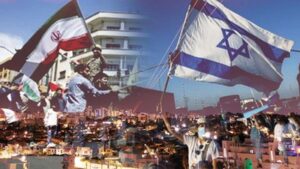
A coordinated missile, rocket, and drone barrage by all of Iran’s proxies would likely overwhelm Israel’s Iron Dome, but such a move would signal an entirely new dimension to the conflict, which would almost certainly trigger a full-throated and sustained Israeli and U.S. response. A coordinated attack by the panoply of Iranian proxies is only made possible through Iran’s “unity of fronts” strategy, which seeks to encircle Israel from all sides in an effort to barrage Israeli towns, villages, and cities with high-tech, Iranian-supplied weaponry.



